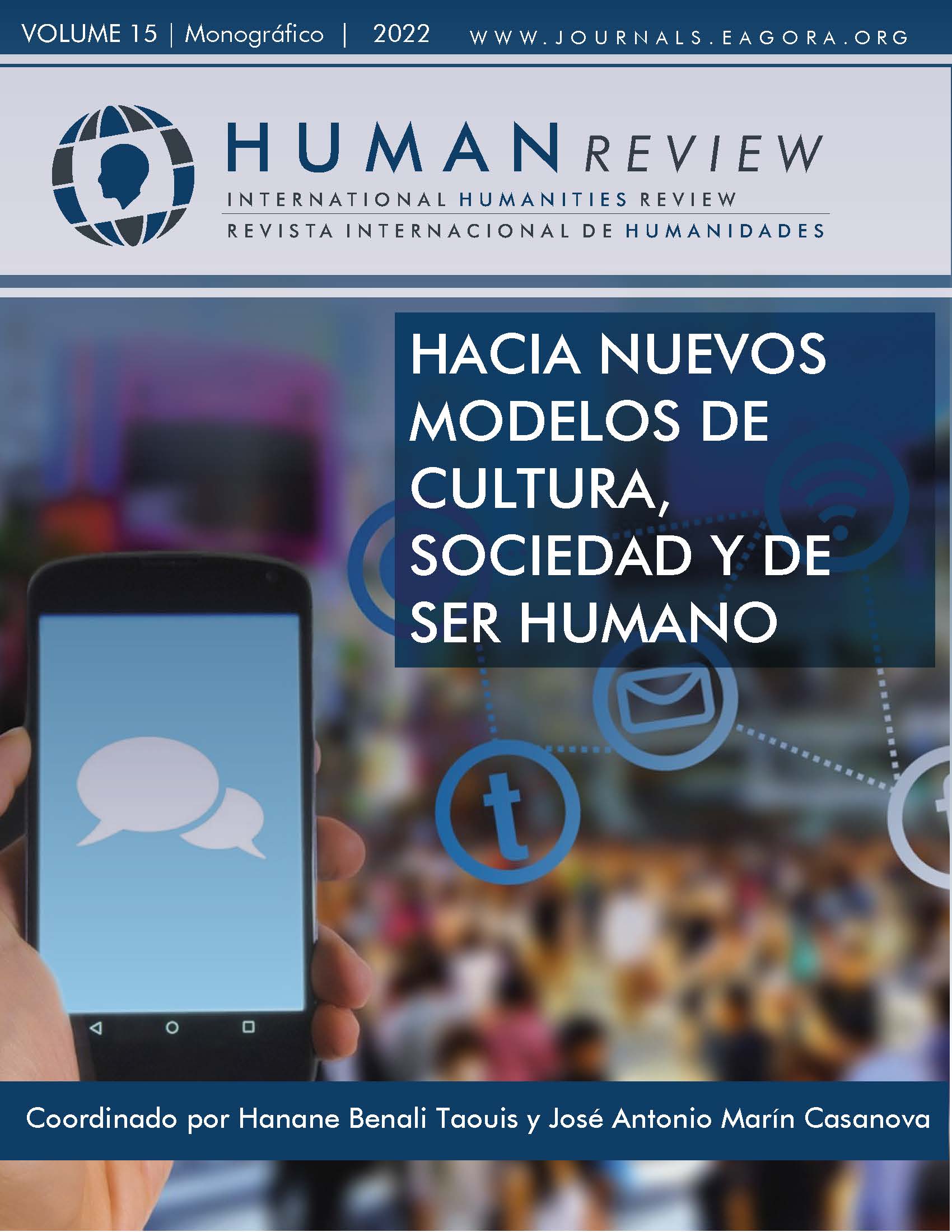Why do users accept the information technology? Description and use of theories and models of their acceptance
Keywords:
Technological acceptance models, Behavioral intention, Behavior of use, TAM, UTAUT 2, Web of Science, MAXQDA softwareAbstract
The objective of this research is to understand, predict and explain what factors influence organizations and induce individuals to accept technology. Through the methodology of content analysis and based on the Web of Science database and through the MAXQDA software, this document analyzes and reviews the ten most important theories and models of technology acceptance used in recent years. This review offers a holistic view that will help future researchers to select the most appropriate theories to apply to their field of study.
References
Abela, J. A. (2002). Las técnicas de análisis de contenido: una revisión actualizada. Sevilla: Fundación Centro de Estudios Andaluces.
Ajzen, I. (1985). From intentions to actions: A theory of planned behavior. In Action control (pp. 11-39). Springer. Heidelber & Ajzen, I. (1988). Attitudes, personality, and behavior. The Dorsey Press.
Ajzen, I. (1991). The theory of planned behavior. Organizational behavior and human decision processes, 50(2), 179-211. https://doi.org/10.1016/0749-5978(91)90020-T
Ajzen, I., y Fishbein, M. (1980). Understanding Attitudes and Predicting Social Behavior. Englewood Cliffs, N.J: Prentice-Hall.
Alexandre, B., Reynaud, E., Osiurak, F., y Navarro, J. (2018). Acceptance and acceptability criteria: a literature review. Cognition, Technology & Work, 20(2), 165-177. https://doi.org/10.1007/s10111-018-0459-1
Alomary, A., y Woollard, J. (2015). How is technology accepted by users? A review of technology acceptance models and theories. Proceedings of The IRES 17th International Conference, London, United Kingdom. https://eprints.soton.ac.uk/382037/1/110-14486008271-4.pdf
Amsterdamska, O., y Leydesdorff, L. (1989). Citations: Indicators of significance? Scientometrics, 15(5-6), 449- 471. https://doi.org/10.1007/BF02017065
Bandura, A. (1986). Social foundations of thought and action. Englewood Cliffs. Bardin, L. (1996.) Análisis de contenido. Akal.
Davis, F. D., Bagozzi, R. P., y Warshaw, P. R. (1989). User acceptance of computer technology: A comparison of two theoretical models. Management Science, 35(8), 982-1003. http://dx.doi.org/10.1287/mnsc.35.8.982
Davis, F. D., y Warshaw, P. R. (1992). What do intention scales measure? The Journal of General Psychology, 119(4), 391-407. https://doi.org/10.1080/00221309.1992.9921181
Dillon, A., y Morris, M. G. (1996). User acceptance of information technology: Theories and models. Annual Review of Information Science and Technology (ARIST), 31, 3-32. https://www.learntechlib.org/p/82513/
Fishbein, M., y Ajzen, I. (1977). Belief, attitude, intention, and behavior: An introduction to theory and research. Philosophy and Rhetoric, 10(2), 130-132.
Gangwar, H., Date, H., y Raoot, A. D. (2014). Review on IT adoption: insights from recent technologies. Journal of Enterprise Information Management, 27(4), 488-502. https://doi.org/10.1108/JEIM-08-2012-0047
Gartner (2018). Identifies Five Emerging Technology Trends That Will Blur the Lines Between Human and Machine.
Obtenido de: https://gtnr.it/34y5U6h
Gough, D., Oliver, S., y Thomas, J. (Eds.). (2017). An introduction to systematic reviews. Sage.
Hanafizadeh, P., Keating, B.W., y Khedmatgozar, H.R. (2014): A systematic review of Internet banking adoption.
Telemat. Inform. 31(3), 492–510. https://doi.org/10.1016/j.tele.2013.04.003
Khasawneh, A. M. (2008). Concepts and measurements of innovativeness: The case of information and communication technologies. International Journal of Arab Culture, Management and Sustainable Development, 1(1), 23-33. DOI:10.1504/IJACMSD.2008.020487
Legris, P., Ingham, J., y Collerette, P. (2003). Why do people use information technology? A critical review of the technology acceptance model. Information & management, 40(3), 191-204. https://doi.org/10.1016/ S0378-7206(01)00143-4
Madden, T. J., Ellen, P. S., y Ajzen, I. (1992). A comparison of the theory of planned behavior and the theory of reasoned action. Personality and social psychology Bulletin, 18(1), 3-9. https://doi. org/10.1177/0146167292181001
Mishra, P. (2012). Rethinking technology & creativity in the 21st century: Crayons are the future. TechTrends, 56(5),
https://doi.org/10.1007/s11528-012-0594-0
Miller, N. & Dollar, J. (1941). Social learning and imitation. Yale University Press.
Phan, K., & Daim, T. U. (2011). Exploring technology acceptance for mobile services. Journal of Industrial Engineering and Management (JIEM), 4(2), 339-360. doi:10.3926/jiem.2011.v4n2.p339-360
Rogers, E.M. (1962). Diffusion of innovations. Free Press. Rogers, E.M. (1983). Diffusion of innovations. Free Press. Rogers, E.M. (1995). Diffusion of innovations. Free Press. Rogers, E.M. (2003). Diffusion of innovations. Free Press.
Taherdoost, H. (2018). A review of technology acceptance and adoption models and theories. Procedia manufacturing, 22, 960-967. https://doi.org/10.1016/j.promfg.2018.03.137
Tarhini, A., Arachchilage, N. A. G., y Abbasi, M. S. (2015). A critical review of theories and models of technology adoption and acceptance in information system research. International Journal of Technology Diffusion (IJTD), 6(4), 58-77.
Taylor, S., y Todd, P.A. (1995a). Assessing IT usage: The role of prior experience. MIS Quarterly, 19(4), 561–570. http://dx.doi.org/10.2307/249633
Thompson, R.L., Higgins, C.A., y Howell, J.M. (1991). Personal Computing: Toward a Conceptual Model of Utilization. MIS Quarterly, 15(1), 124-143. http://dx.doi.org/10.2307/249443
Triandis, H. C. (1977). Cross-cultural social and personality psychology. Personality and Social Psychology Bulletin, 3(2), 143-158. https://doi.org/10.1177/014616727700300202
Triandis, H. C. (1980). Reflections on trends in cross-cultural research. Journal of cross-cultural psychology, 11(1), 35-58. https://doi.org/10.1177/0022022180111003
Venkatesh, V., Morris, M. G., Davis, G. B., y Davis, F. D. (2003). User Acceptance of Information Technology: Toward a Unified View. MIS Quarterly, 27(3), 425-478. https://doi.org/10.2307/30036540
Venkatesh, V., Thong, J.Y.L., y Xu, X. (2012). Consumer acceptance and use of Information technology: Extending the Unified Theory of Acceptance and Use of Technology. MIS Quarterly, 36(1), 157–178. https://doi. org/10.2307/41410412
Yousafzai, S. Y., Foxall, G. R., y Pallister, J. G. (2007). Technology acceptance: a meta-analysis of the TAM: Part 1.
Journal of modelling in management, 2(3), 251-280. https://doi.org/10.1108/17465660710834453
Downloads
Published
Issue
Section
License
All articles are published under an Attribution-NoDerivatives 4.0 International (CC BY-ND 4.0) license. Authors retain copyright over their work.

